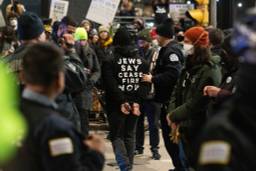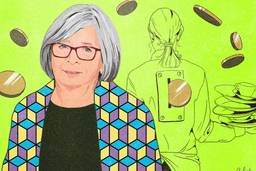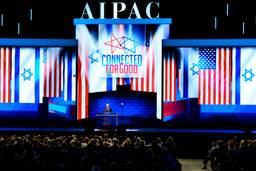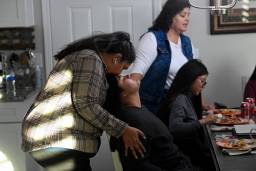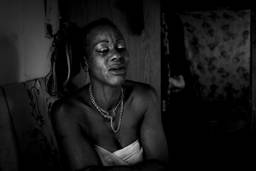‘Police Chose the Klan Over Our People’: On Resisting Racism in Charlottesville
When the KKK came to this city, communities mobilized for collective self-defense. Police were not on their side.
Sarah Jaffe
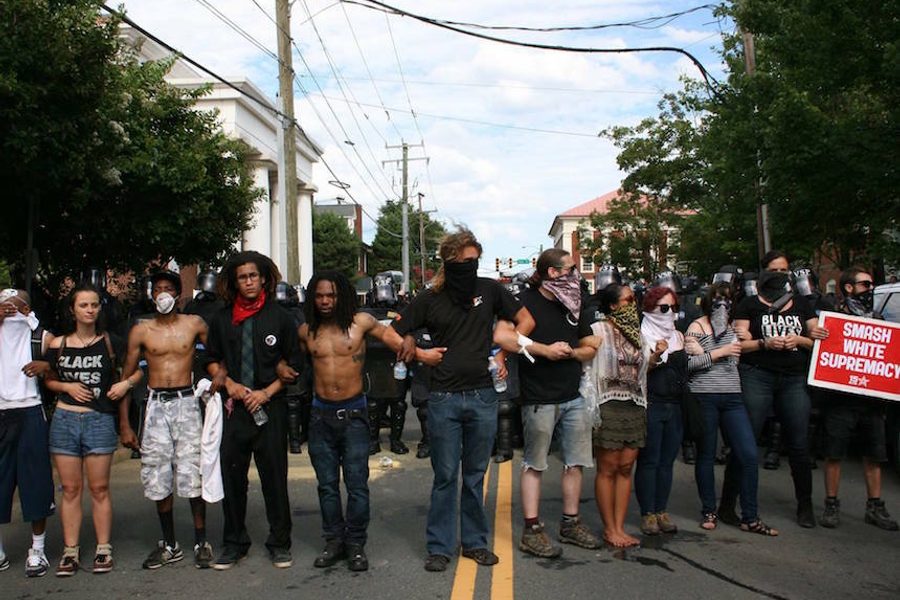
Welcome to Interviews for Resistance. Since election night 2016, the streets of the United States have rung with resistance. People all over the country have woken up with the conviction that they must do something to fight inequality in all its forms. But many are wondering what it is they can do. In this series, we’ll be talking with experienced organizers, troublemakers, and thinkers who have been doing the hard work of fighting for a long time. They’ll share their insights on what works, what doesn’t, what has changed and what is still the same.
Laura Goldblatt: I am Laura Goldblatt. I live in Charlottesville, Virginia and I am post-doctoral fellow at University of Virginia.
Mimi Arbeit: Hi, my name is Mimi Arbeit. I am an organizer with Showing Up for Racial Justice, Charlottesville working to end white supremacy and [win] reparations in the City of Charlottesville.
Sarah Jaffe: We are talking on Saturday, after the conclusion of a rally by the Ku Klux Klan and the counter rally that you helped organize. Tell us about how the rally went.
Laura: Today, people in Charlottesville showed up in an act of community of self-defense when the city showed that they would not defend us, nor would the police. In that sense, we celebrated our strength as a community and our ability to stand with each other and provide some measure of safe space in the midst of a really hostile moment.
People showed up at the park early in the day. People started with prayers, and more and more people gathered. There was music. There were people with signs. There was this beautiful installation of a thousand cranes, because cranes are a Japanese sign of solidarity. It is believed that if you fold a thousand cranes, you will be granted a wish. So, people embedded in the cranes their wishes to end white supremacy.
There were thousands of people there. It was a really moving show of the community coming out despite the fact that the city had officially discouraged people for coming and, instead, organized a variety of alternative events. Then, the police provided safe passage for the Klan to enter the park. They violently removed protestors who were standing at the entrance that the Klan had intended to use in order to prevent them from entering and from endangering our community. Police brutally removed those protestors. Nonetheless, activists remained chanting at the Klan and lingered long after following the police as the police, again, provided safe passage to the Klan back to their cars.
Then, following that, the police set off several chemical agents, including several in the vicinity of activists who they had injured in pushing them away or pushing them down. Those activists were in the direct line of those chemical agents and could not move because they were wounded.
We delayed the Klan. They showed up. Their permit was from 3 p.m. to 4 p.m., and they didn’t even get into the park until like 3:55 p.m. We could not completely prevent them from entering — that would have been a bigger victory. But, yes, we delayed them. There were like eight of them and thousands of us. We are stronger than them, there are more of us than them. The state and the threat of racist terrorism can’t keep us away.
Mimi: Charlottesville mobilized yesterday. The people of Charlottesville came out in high numbers with strong spirit and really showed the vibrancy of our collective energy to resist intimidation and initiate change. What we did see was that the police were there to protect white supremacy. The police chose the Klan over our people. That is excruciating.
Sarah: Let’s go back a little bit. Tell us about the history of the Klan in this area. Why did they decide to have this rally here now?
Laura: Part of the reason that the Klan is coming back is because of the city council vote to remove the Stonewall Jackson and Robert E. Lee statues from two public parks in the area. The Klan has a really long and intimate history with those statues. The Klan was formed [in Charlottesville] in 1921 at Thomas Jefferson’s grave at Monticello. So, they are very closely tied with a long history that goes all the way back to the founding of the United States as a sovereign nation in terms of the history of white supremacy.
Then, the Klan and various supporters put up these statues. They were actually put up overlooking what, at the time, were two prominent Black communities as a way to intimidate people of color, Jews and immigrants in the area. They served as a kind of warning. In a lot of ways, the Klan coming back today to this particular park to rally around this statue was a kind of homecoming for them and shows us the ties between historical white supremacy and its persistence in the city to this day.
Mimi: To talk about history, let’s start with the person who is credited with the founding of Charlottesville: Thomas Jefferson, who also founded the University of Virginia (UVA). Thomas Jefferson popularized white supremacist ideology in this country. The history of enslavement, the history of Thomas Jefferson raping Sally Hemings, is connected to the history of the Lee and Jackson statues that uphold the violence of the confederacy and the oppression of slavery. The Klan is part of that history, too.
What we need to do in Charlottesville is to confront the legacy of Thomas Jefferson. Thomas Jefferson is still celebrated. There is a festival weekend dedicated to celebrating him. The president of UVA, Teresa Sullivan, references Thomas Jefferson time and again. There are so many things named after Thomas Jefferson. The people of Charlottesville need to confront and be able to betray the racist, rapist legacy of Thomas Jefferson in order to truly be ready to do the work of racial justice.
Sarah: You mentioned briefly the response of the city government to the Klan deciding to have this rally and the police protecting them. Talk a little bit about the different attempts that were made to stop this from happening.
Laura: People had been to city council meetings and had demanded that this permit be revoked as a matter of public safety. We reiterated that demand for August 12, which will be an even larger white supremacist really in newly named Emancipation Park, formerly called Lee Park. We are going to see even more groups, groups that have a real commitment to violence and have been violent at other similar events across the nation. So, activists attended city council meetings and demanded that these permits be revoked as a matter of public safety.
People wrote letters, sent emails, wrote editorials, and the city had said that this is constitutionally protected free speech and that they cannot revoke the permit and these groups are allowed to come despite the threat that they pose to public safety. Instead, the city has said, “You should just ignore them. We will provide other events for you to go to.” But, of course, ignoring white supremacy historically has not been a winning strategy.
Sarah: Tell us about the organizing that has been done on that front since the city refused to revoke the permit. Talk about how the counter rally came together today and the ties in the community that are growing out of this organizing.
Laura: There were a bunch of groups that came together to organize. It was a larger coalition than we had seen so far in terms of different groups. One group that was organizing was SURJ: Standing Up for Racial Justice. There was a Black Lives Matter chapter that was organized. There was a recently formed group called Congregate C-Ville, which is a group of faith leaders who are really concerned about white supremacy and racial justice and have come together in an act of solidarity with these other groups.
We saw that there are these other groups, including EPIC: Equity and Progress in Charlottesville, which plugs a lot of the events and some people had cross-pollinated between the two groups. And even some people from the Indivisible chapters of Charlottesville had come to organizing meetings. There are also some other local activists who lent their hands.
It was a really, really large rally. It took a lot of organizing. All these different groups were meeting to organize action plans, security, medics, jail support and legal response. MA
Sarah: What are some lessons that you took away from how this rally went that you are planning to put into the planning for the next one?
Laura: One lesson is that our community is strong, and we are looking out for each other. We are here to protect each other despite the fact that it is very clear that the city and the police are not there to protect us. That is an old activist lesson, but one that I think was reiterated across today. The police are here to protect capitalism. They are here to protect white supremacy, and we shouldn’t be surprised that we see these racist policies in our criminal justice system with things like bail bond and the fact that people can be held because they are too poor to get themselves out of jail or the ways that people prosecuted for drug crimes in the area.
The other lesson we learned is that these monuments are symbols of white supremacy in Charlottesville, and it is not enough to call for their removal. We have to push for these material demands. We have to say “You cannot get rid of one without getting rid of the other” and that these two things are linked. We are using this as a way to catalyze communities in Charlottesville.
Mimi: Ignoring the Klan in the 1920s, allowed them to terrorize and murder Black people. Ignoring new white supremacist groups today, these ones that are coming in August in Charlottesville, led to their gain in political power, led to their gain of the presidency and has led to harassment and violence nationwide. We must confront and disavow this march on Charlottesville that is scheduled of August 12. The local community is asking Mayor Signer and The City of Charlottesville to revoke the permit for the August 12th rally. This is essential for racial justice and for community safety.
I want people to see that if Charlottesville can be a target of racist violence and intimidation, communities across the country can also be a target of racist violence and intimidation. If Charlottesville can mobilize in resistance, communities across the country can also mobilize in resistance.
Interviews for Resistance is a project of Sarah Jaffe, with assistance from Laura Feuillebois and support from the Nation Institute. It is also available as a podcast on iTunes. Not to be reprinted without permission.

I hope you found this article important. Before you leave, I want to ask you to consider supporting our work with a donation. In These Times needs readers like you to help sustain our mission. We don’t depend on—or want—corporate advertising or deep-pocketed billionaires to fund our journalism. We’re supported by you, the reader, so we can focus on covering the issues that matter most to the progressive movement without fear or compromise.
Our work isn’t hidden behind a paywall because of people like you who support our journalism. We want to keep it that way. If you value the work we do and the movements we cover, please consider donating to In These Times.
Sarah Jaffe is a Type Media Center Fellow, co-host (with Michelle Chen) of Dissent magazine’s Belabored podcast, and a columnist at The Progressive. She was formerly a staff writer at In These Times and the labor editor at AlterNet. Her previous books are Work Won’t Love You Back: How Devotion to Our Jobs Keeps Us Exploited, Exhausted and Alone and Necessary Trouble: Americans in Revolt, which Robin D.G. Kelley called “The most compelling social and political portrait of our age.” You can follow her on Twitter @sarahljaffe.

